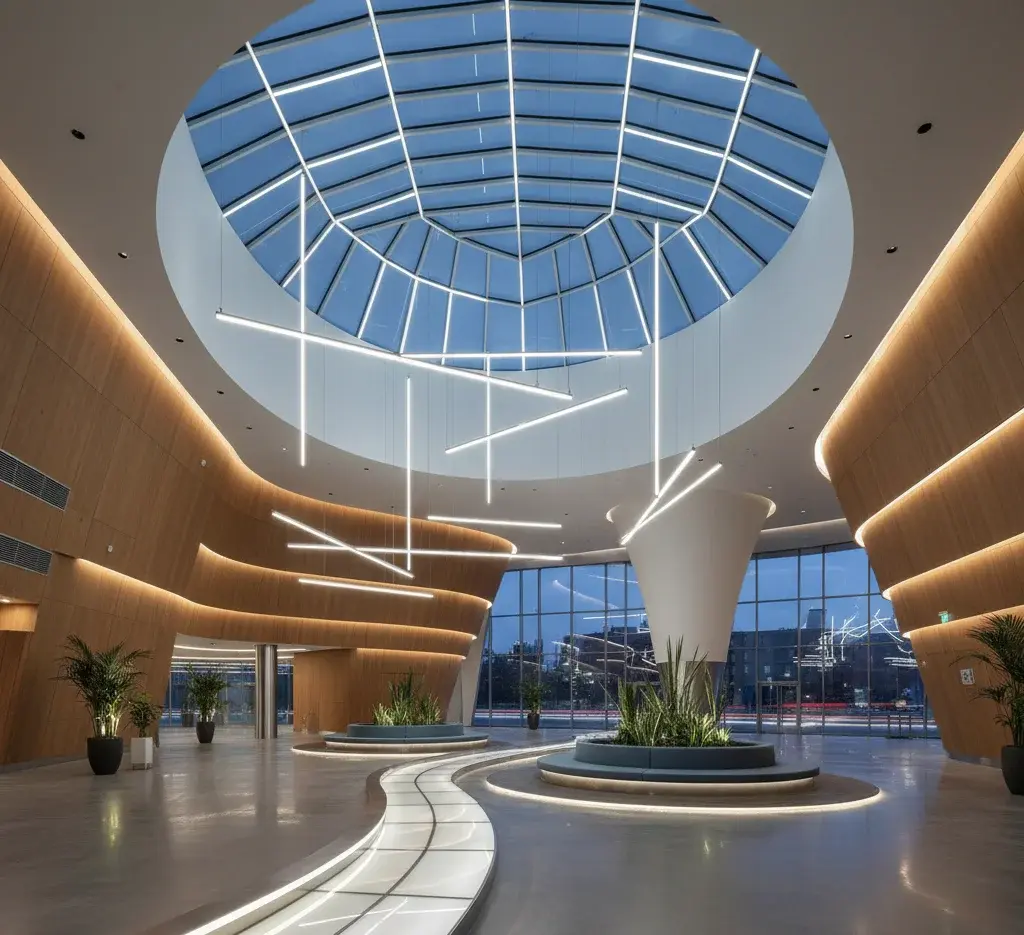BLOG

At Pamir Lighting, we want to explain briefly and clearly how linear lighting transforms the spirit of your space.
Linear lighting allows spaces to speak not only through light but also through atmosphere. From modern offices to stylish storefronts, from residential spaces to exhibition halls, it offers an aesthetic and functional solution in almost any space. Properly designed linear lighting defines the contours of a space, creates a sense of spaciousness, and highlights products or areas. The homogeneous light distribution, energy efficiency, and long-lasting systems make linear fixtures both an economical and practical choice. Thanks to their design flexibility, a variety of lengths, wattages, and color temperatures allow us to create the perfect solution to match the spirit of the space. Installation and technical support are also crucial; with the right application, the potential of light is maximized. If you're looking for a solution that adds elegance and functionality to your space while also saving energy, linear lighting is an ideal choice. This system, which combines aesthetics, function, and efficiency, adds a modern touch to your living and working spaces. With the right orientation and selection, you can achieve a lighting experience that is both eye-catching and comfortable.
There are many models available, but you need to choose the one that best suits your needs. At Pamir Lighting, we're here to help you. Let's examine the models in more detail. Slim-profile recessed fixtures virtually integrate into the ceiling surface, while suspended and pendant models provide powerful and balanced illumination in large spaces with high ceilings. Modular systems that provide continuous illumination are ideal for long corridors and display cases, while durable, IP-rated housings provide reliable performance in humid or industrial environments. Tunable white and dimmable options make it easy to create the right atmosphere for a variety of usage scenarios, from offices to retail. Minimally designed profiles add elegance to modern spaces, while wider, higher-power fixtures provide uniform distribution in large open spaces. Choosing the right model affects not only appearance but also energy efficiency, ease of maintenance, and user comfort. Therefore, making a selection after considering project-specific dimensions, mounting type, and control requirements will yield the most efficient results.
While at first glance, it may seem like just the product price, it actually requires a multifaceted evaluation. A one-time low cost may be attractive; however, in the long run, energy consumption, maintenance requirements, warranty coverage, and the light quality offered by the luminaire determine the total cost. Length, power, CRI, control options such as tunable white or dimming, IP rating, and the quality of the LED chip and driver used directly impact the price. Furthermore, special cuts, printed profiles, or integrated sensors/accessories also increase the cost, but such customizations often pay off in the value they add to the space.
In small projects, individually selected, high-quality luminaires provide comfort and aesthetic appeal; in large-scale applications, the unit cost of modular systems and bulk purchases can be more advantageous. Installation challenges and infrastructure adaptations should also be considered; labor costs can differ between a simple ceiling installation and a complex suspended system.
Don't just consider the purchase price when evaluating the price: the lifespan of the luminaire, energy efficiency, service support, and warranty period can reduce the total cost of ownership. A reputable supplier will provide sample products, provide project-specific calculations, and promise long-term support. These are often more valuable than short-term savings.
It's not accurate to specify the required wattage with a single number; it's best to determine a range based on the purpose of the space, ceiling height, surface reflectivity, and desired lux level. As a general guide, a practical and common use is approximately 9 W/m² for residential and ambient spaces, 15 W/m² for offices and workspaces, 24 W/m² for the entire store, 30 W/m² for product highlighting in displays, and approximately 48 W/m² for industrial or high-ceilinged workspaces. These averages are the preferred values for comfortable lighting, combined with good optical control, high CRI, and efficient LEDs. These values may need to be increased as ceiling height increases or special task lighting is required. For the most accurate results, it's best to calculate based on the target lux and consider the installation layout. Contact us during this process to determine the most suitable and effective linear lighting option.
OUR LATEST POSTS